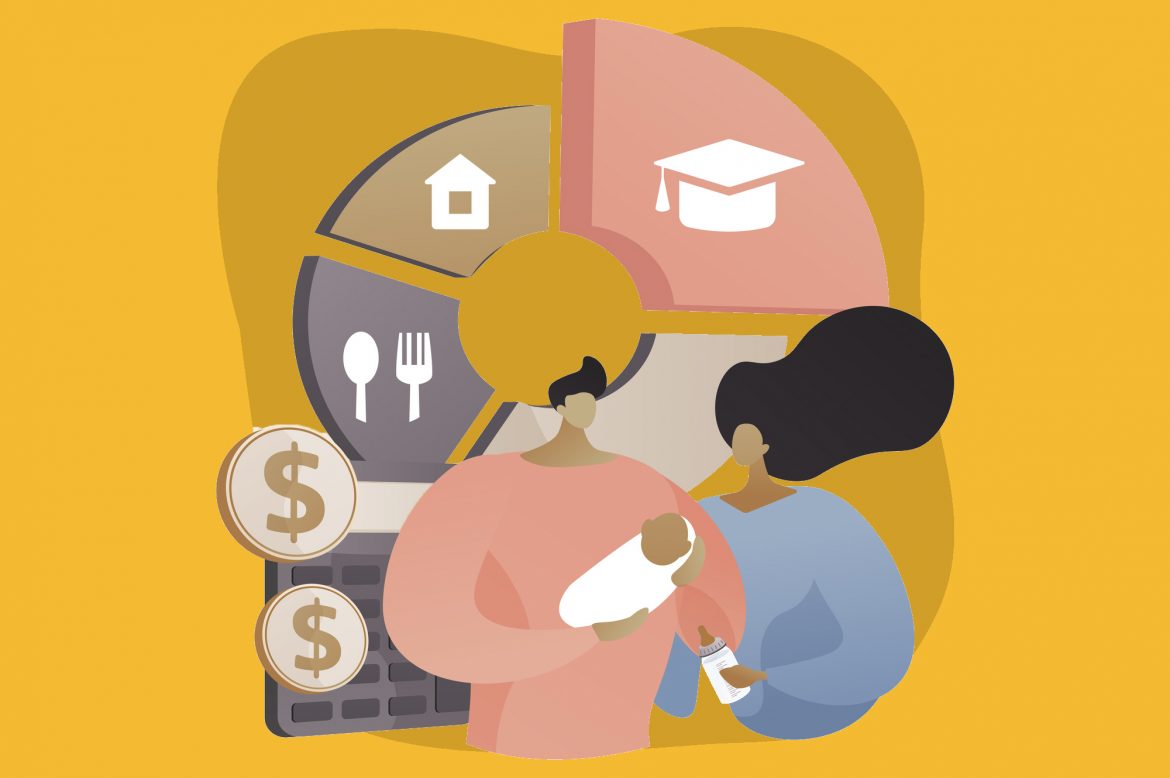A new cost-of-living study reveals a hard truth that millions of Californians now face: In many parts of the Golden State, having a job is far from enough to ensure financial stability.
The report from United Ways of California, an antipoverty advocacy organization, shows that the rising costs of housing and child care have outstripped growth in wages so much that 3.5 million working households don’t make enough to meet their most basic necessities.
Peter Manzo, president and CEO of United Ways of California, said the report shows a need to expand eligibility for safety net programs, such as earned income tax credits for the working poor, to higher-income levels since there’s an expansive swath of working households that need help. Those state tax credits currently cap off at annual incomes of $30,000.
“People are still struggling even as they’re getting into that $40,000 to $50,000 range,” Manzo said, but assistance “falls away before they reach a decent standard of living.”
The report, which analyzed Census Bureau data from the five years before the pandemic, underscores the different realities of California’s haves and have-nots — an economic divide both exposed and deepened by the COVID-19 crisis. And it shows the monumental task ahead for California lawmakers, who have promised to forge an equitable recovery with unprecedented federal relief and a historic state surplus.
A comprehensive poverty measure
The annual report, titled Struggling to Move Up: The Real Cost Measure in California 2021, aims to provide a complete picture of California’s economic divide. The latest report reflects a slight decrease in the number of struggling families compared to two years prior, consistent with downward trends in other poverty measures. The authors said they will continue to study factors for the decline, such as families having fewer children and the state’s gradual minimum wage increase to $15 an hour in 2022.
Currently, the Federal Poverty Measure puts California’s poverty rate at 11.4%, but doesn’t consider the regional cost of housing, food, medical care, and transportation. At 17.2%, the Supplemental Poverty Measure does, but assumes a bare minimum lifestyle.
By contrast, the United Ways’ measure factors in the budget needed for a decent standard of living that gives families “agency, dignity and mobility,” the researchers wrote. The report found that 97% of struggling households have at least one adult working full time, suggesting that the problem is jobs that don’t pay enough.

Why is the cost of living so high in California? Child care and housing
Housing costs are the primary burden for households who struggle to make ends meet, according to the report. About 4.1 million households spend more than 30% of their income on housing, a standard benchmark for affordability.
The Real Cost Measure also reveals how unaffordable it can be to have young children for many Californians. A two-adult household living in Sacramento can meet its basic needs with an annual income of $43,201. That grows to $77,072 when that household adds two young children, a 78% income increase. The cost of child care would exceed the cost of housing for this family.
Often the high cost of raising a young child in California takes many families over the financial edge, the report found. More than half of California’s children under the age of 6 live in households that struggle to meet basic needs. For young children raised by single parents, the rate is 79%.
Racial and regional income inequality
Researchers also created an interactive dashboard that reveals deep disparities between communities.
For example, in Redondo Beach, Manhattan Beach, and Hermosa Beach, the percentage of households below the Real Cost Measure is only 12%.
Less than 15 miles away, 80% of households in the Los Angeles neighborhoods of Central Alameda and East Vernon can’t afford to meet basic needs. In fact, the California communities with the highest rates of families unable to cover their essential needs were all clustered in Los Angeles County.
Using Census data, the report also breaks down disparities between ethnicities. The report finds that 1.7 million Latino households, or 51%, are struggling to meet basic needs, the largest number of households from any racial or ethnic group in the state. The rates were also high for Native American and African American households.
Spending to shrink economic divide
Sen. Nancy Skinner, a Democrat from Oakland, said that the state is spending unprecedented money this year on programs for the struggling families highlighted in the report. That’s only possible, she said, because of the soaring tax revenues that the richest Californians enjoyed this year.
The lawmaker pointed to the programs introduced into this year’s budget, which Democrats hope will help shrink California’s economic divide, including a second round of the California Golden State stimulus checks, renter’s assistance program, child care subsidies, expanded eligibility for MediCal, and the opportunity for cities to launch their own guaranteed basic income programs.
“The irony is that you had this stock market that went out the roof and you had lots of people making a lot more money,” Skinner said. “However, you had the majority of Californians who were really hurt economically from the pandemic.”

Raising caps on eligibility
Manzo said he hopes that the report will lead to changes in the California Earned Income Tax Credit and Young Child Tax Credit, which California has expanded several times in the past two years. To be eligible for the credit, households must earn $30,000 or less. But in high-cost areas, households struggle to meet basic needs when their annual income is in the $50,000 range.
“We should raise the caps on eligibility,” Manzo said.
Manzo said that the report is designed to help decision makers understand not only how much income a family needs to overcome poverty, but to also highlight opportunities to reduce expenses.
“Income is not enough. Work is not enough,” Manzo said. “So what can we do to either supplement income or reduce costs?”
This article is part of the California Divide, a collaboration among newsrooms examining income inequality and economic survival in California.

Kudos to The Exedra for reporting on this new report and critical underlying issue. The economic struggles of our fellow Californians affect all of us.